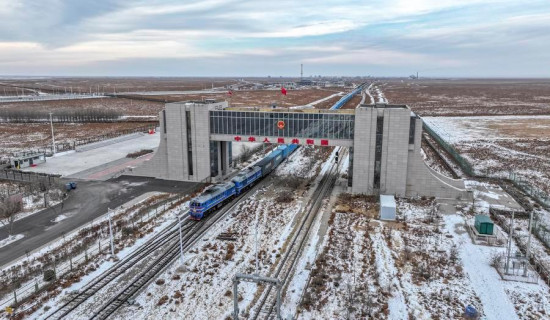- Wednesday, 24 December 2025
Climate Change Hits Pregnant Women
One of the adverse impacts of climate change on earth is the increase in heat. According to an article Climate Change: Global Temperature by Rebecca Lindsey and Luann Dahlman, there has been an increase of about one degrees Celsius in the global average surface temperature since the pre-industrial era of 1850-1900. The report mentions that while this increase may seem small, it actually signifies a significant accumulation of heat. It is projected that the Earth's average temperature will rise by nearly three degrees by the end of the century. This increase in heat is driving regional and seasonal temperature extremes, reducing snow cover and sea ice, intensifying heavy rainfalls, and changing habitat ranges for plants and animals.
The report also notes that most land areas have warmed faster than most ocean areas, and the rate of warming over the past few decades is much faster than the average rate since the start of the 20th century. The impact of global warming and the increase in health issues seem to have an adverse effect on pregnant women and childbirth. According to a recent BBC report by Tulip Mazumdar, research from South India suggests that working in extreme heat can double the risk of stillbirth and miscarriage. Researchers state that hotter summers can affect not only women in tropical climates but also in countries like the UK. Therefore, there is now a need for specific health advice for working pregnant women globally.
Heat exposure
A study conducted on 800 pregnant women in Tamil Nadu, India, by the Faculty of Public Health at the Sri Ramachandra Institute of Higher Education and Research Centre (SRIHER) in Chennai since 2017 has released this finding. About half of the women studied worked in jobs where they were exposed to high levels of heat in sectors such as agriculture, brick kilns, and salt flats. Some women worked in cooler environments like schools and hospitals, but even in these jobs, some workers were exposed to high levels of heat. The impact of heat is relative to what one's body is accustomed to, and there is no universal threshold for what level of heat is considered to be too hot for the human body.
Mazumdar's report mentions that working in extreme heat in India increases the risk of miscarriage by 5 per cent, compared to a 2 per cent increase when not exposed to extreme heat. Similarly, the risk of stillbirth or premature birth increases by 6.1 per cent in extreme heat, compared to a 2.6 per cent increase when not exposed to heat. The low birth weight of new-born babies increases by 8.4 per cent in extreme heat, compared to 4.6 per cent when unexposed. Based on the anticipated increase in the earth's temperature by nearly three degrees Celsius by the end of the century, the World Health Organisation (WHO) warns of an existential threat to all of us, but especially to pregnant women, due to the risks of facing some of the gravest consequences.
According to WHO's document on protecting maternal, newborn, and child health from the impacts of climate change, the effects of climate events on maternal health have been neglected, underreported, and underestimated. This document highlights the fact that very few countries have included climate change response plans for maternal or child health. This inadequate attention to the needs of women, newborns, and children in the climate change discourse is recognised by WHO. The document mentions that the year 2023 has been marked by a series of devastating climate disasters, and an overheating world is increasing the spread of deadly diseases like cholera, malaria, and dengue, with dire consequences for pregnant women and children.
This document seems to be validated by the recent research from SRIHER that states harm can begin even in the womb, leading to pregnancy-related complications, preterm birth, low birth weight, and stillbirths. According to a report "How is India Adapting to Heat Waves," by the Centre for Policy Research, the number of hot days and nights is projected to double or even quadruple in India by 2050. While no such data was available for Nepal, it can be estimated based on global data that the increase in heat is a reality here, as it is everywhere else. The adverse impacts of heat on pregnant women could possibly be a reality here too. Therefore, Nepal Government needs to address issues related to pregnancy and climate change.
Recommendations
In the meantime, it would be beneficial for the general public, especially pregnant women and their families, to be aware of some of the recommendations based on SRIHER's research. The recommendations include protection by avoiding prolonged periods in the heat, taking regular shade breaks if working outdoors on hot days, avoiding exercising or sunbathing for long periods in the hottest parts of the day, and staying hydrated with water. From my conversations with friends and family members, I have learned that there are many cases of fatalities related to pregnancy and the birth of underweight babies here in Nepal too.
There is a need for proper research to identify the causes. An increase in heat could possibly be one reason that most of us may not be aware of. The work conditions of women in both rural and urban Nepal include exposure to extreme heat while working in farms or labouring in open areas in towns and cities. Working indoors in offices and houses also exposes people to the adverse effects of heat, especially when there is a lack of ventilation and cooling devices. Therefore, adhering to the above advice by SRIHER would be advisable here too.
(Sharma is a senior journalist and women's rights advocate namrata1964@yahoo.com. Twitter handle: @NamrataSharmaP)

















